The Peterborough Canoe Company of course!
By now I’m sure you’re aware that we have some surprising and unusual items in our collection, but did you know that The Canadian Canoe Museum is home to a collection of cross-country and down-hill skis?
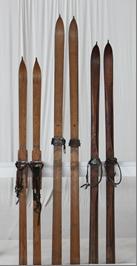
Skis were an easy cross over product for local canoe companies in the early-mid 20th century. Local builders like the Peterborough Canoe Company, and the Chestnut Canoe Company already had the equipment, suppliers and skilled workers required to steam, bend and manipulate wooden planks. Although many canoe companies were making winter products, the Museum’s ski collection is comprised mostly of Peterborough Canoe Company Skis constructed primarily of ash or hickory (considered superior for its flexibility and strength).
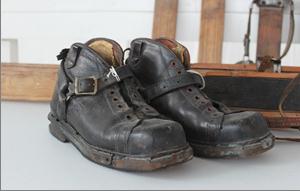
It is difficult to pinpoint precisely when the Peterborough Canoe Company began manufacturing skis, however, it can be safely assumed that it was sometime before WWI. Ads from the 1930’s depict Peterborough-ians gliding along icy paths on skis whose quality “equal[ed] the best imported ski”.
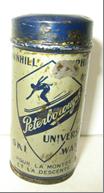
Peterborough Canoe Company Skis were considered to be high quality products and were sold in departments stores like Eatons, as well as by local ski shops. The Peterborough Canoe Company even had its own brand of ski wax!
Peterborough was not only the home of quality ski production, it was the home of some quality skiers. Peterborough skiing legend Otto Laderach was one of a group of young people who brought passion and daring to the sport as early as 1926, a time when ski clubs were starting to become more popular and established.
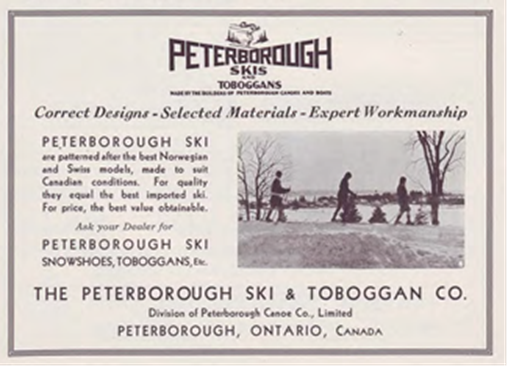
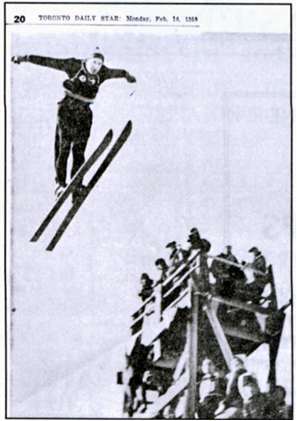
Peterborough resident, ski enthusiast, and Canoe Museum member, Ian Blaiklock, can remember embarking on day long excursions with Otto. A group of skiers would make their way to the CPR station, catch the train to Cavan, and ski from Cavan to Bethany in order to enjoy a day on the hill. Once their day of down-hill was complete, the group would ski back to the train station and make their way home. Ian recalls using Peterborough Canoe Company skis with cable harness bindings on these multi-disciplinary adventures. When skiing cross-country, the cable binding was unlocked to allow your foot to have a wider range of motion; when skiing down-hill the cable secured your foot firmly to the ski. Suggesting that it is possible to ski cross- country and down-hill on the same pair of skis today is likely to elicit some laughs up at Kawartha Nordic!
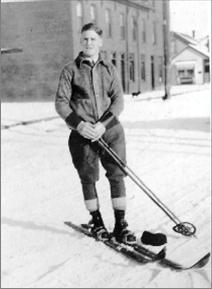
On more than one occasion Otto would bypass the train altogether, instead opting to ski all the way from Peterborough to the Bethany ski hill (and back again!). Ian can remember joining Otto on several of these day-long treks, and has remarked that they must have laid down in the snow and slept before taking on the hill.

Peterborough skis were great for recreation and exercise, but did you know that they were also used in guerilla warfare? Legend has it that in the early 1940’s, Peterborough Canoe Company Skis were shipped via Northern Quebec to Finland to help resist the Soviet invasion. Small but skilled contingents of Finnish soldiers would silently glide through the backwoods using only one pole. Their familiarity with the terrain and the mode of transport enabled them to hold off the Soviet forces.
Wooden skis like those made by the Peterborough Canoe Company fell out of favour in the 1950’s with the advent of newer, lighter and cheaper materials. However, Peterborough skis were built to last, and many from the 1930’s and 40’s are still around today hiding out at cottages and lurking in attics. Although defunct, the Peterborough Canoe Company Ski Division remains a testament to Peterborough’s innovative industrial heritage and rich outdoor culture.
Special Thanks to Ian Blaiklock and Cy Monkman for their help in researching this article. Cy’s book “The Forgotten Sports Era: A History of the Peterborough Ski Club” is the foremost authority on local ski culture.






